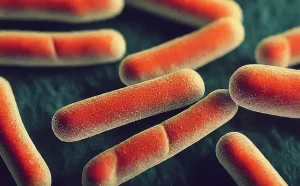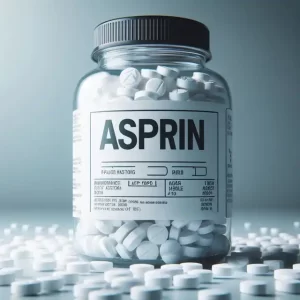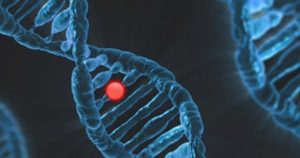Stem cell therapy treats liver cirrhosis by inhibiting hepatic stellate cells
- Why Botulinum Toxin Reigns as One of the Deadliest Poisons?
- FDA Approves Pfizer’s One-Time Gene Therapy for Hemophilia B: $3.5 Million per Dose
- Aspirin: Study Finds Greater Benefits for These Colorectal Cancer Patients
- Cancer Can Occur Without Genetic Mutations?
- Statins Lower Blood Lipids: How Long is a Course?
- Warning: Smartwatch Blood Sugar Measurement Deemed Dangerous
Stem cell therapy treats liver cirrhosis by inhibiting hepatic stellate cells
Stem cell therapy treats liver cirrhosis by inhibiting hepatic stellate cells. Stem cells can effectively improve liver function, coagulation function and clinical symptoms, and relieve the progression of liver cirrhosis.

Cirrhosis is a common clinical chronic disease of the liver. Diffuse liver injury is caused by the long-term effects of viruses, alcohol, autoimmunity and other factors. It is accompanied by damage to microcirculation, vascular anatomy and liver structure. The liver required for orthotopic liver transplantation is currently The source is very stressful, and there is no effective way to repair liver cirrhosis.
Mechanism of liver cirrhosis
Liver cirrhosis is closely related to the excessive accumulation of extracellular matrix. The extracellular matrix mainly comes from hepatic stellate cells. The activation and proliferation of hepatic stellate cells are considered to be the central link in the occurrence and progression of liver fibrosis. When the liver is damaged, hepatic stellate cells transform from a relatively quiescent phenotype to an activated phenotype, acquire myofibroblast-like characteristics, and secrete and synthesize a variety of extracellular matrix to participate in the occurrence and development of liver fibrosis.
Stem cell therapy inhibits hepatic stellate cells
The regression of liver cirrhosis is closely related to the apoptosis, aging and dormancy pathways of hepatic stellate cells. Scientists have discovered that stem cells activate the Notch signal pathway mediated by hepatic stellate cells Notch1 through direct cell contact, and affect multiple metabolic pathways to inhibit the activation of hepatic stellate cells, thereby alleviating the process of liver cirrhosis.
Stem cells are adult stem cells, which can eventually become many different types of mature cells through specific induction and differentiation in vivo or in vitro. Stem cells have a wide range of sources, such as bone marrow, fat, amniotic fluid, umbilical cord, muscle and other parts. They are easy to obtain and expand and culture in vitro.
In recent years, research on stem cell therapy to repair liver cirrhosis has increased. According to Pan et al.’s research results, stem cells can inhibit the proliferation and activation of HSCs by interfering with the LPS-TLR4 and NF-κB signaling pathways. Cao et al. believe that the paracrine effect of stem cells is caused by inhibiting the expression of ACTA2 and hepatocyte growth factor (HGF), which induces hepatic stellate cell apoptosis. The indirect co-culture experiment of stem cells and hepatic stellate cells by Qin et al. found that stem cell therapy can delay the proliferation of hepatic stellate cells, accelerate cell apoptosis, increase the expression level of P27 protein and reduce the expression of RhoA.
Many researchers have found that after bone marrow mesenchymal stem cells are transplanted into cirrhotic rats, the stem cells home to the liver to play a role, reduce liver inflammation, delay liver fibrosis, and improve liver function. Mohamed et al. believed that stem cell therapy repaired the rat model of liver fibrosis. Tracking results showed that the expression of stem cells in the rat liver was significantly increased, the fibroblasts and MMP-2mRNA of hepatocytes increased, and CK-19mRNA HGF was in the cells secreted by stem cells. Decrease in expression.
Clinical case of stem cell repairing liver cirrhosis
Jang et al. carried out a clinical trial using autologous bone marrow mesenchymal stem cells to repair liver cirrhosis. The results showed that liver fibrosis indicators decreased, CP grade decreased, and liver regeneration (increased liver volume). The researchers selected 60 patients with liver cirrhosis. The results of the study showed that the expression of SDF-1 and CXCR4 in the peripheral blood of patients with liver cirrhosis was up-regulated, and the levels of the two were positively correlated, suggesting that SDF-1 and CXCR4 are involved in regulating the occurrence and development of cirrhosis.
Zheng et al. studied 115 patients with decompensated liver cirrhosis and performed stem cell transplantation. The AST, ALT, and TB indexes of the patients all decreased, and the ALB index increased. The symptoms of loss of appetite, ascites, bloating and fullness were improved, indicating that stem cells can be effective To improve liver function, coagulation function and clinical symptoms, and relieve the progression of cirrhosis, stem cell therapy is a safe and effective new clinical method
(sourceinternet, reference only)
Disclaimer of medicaltrend.org



